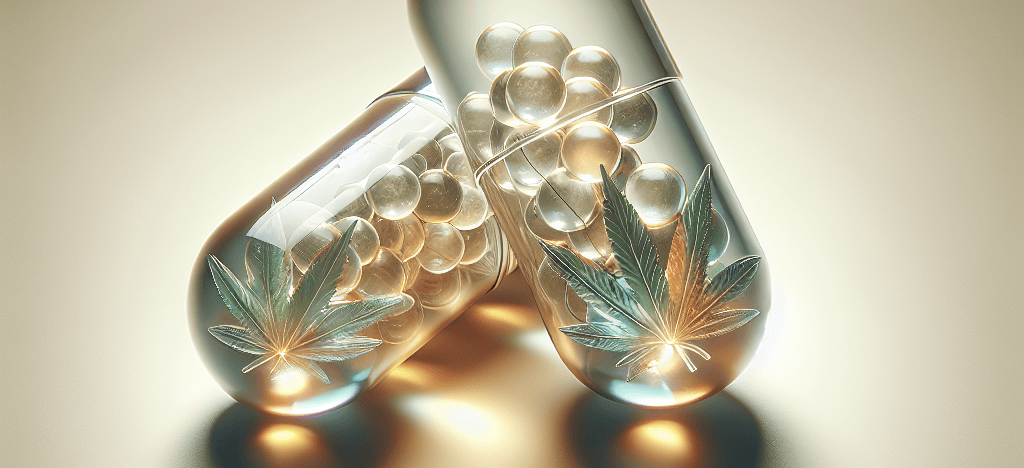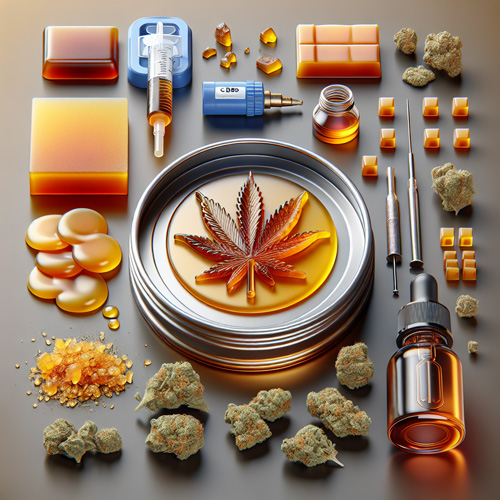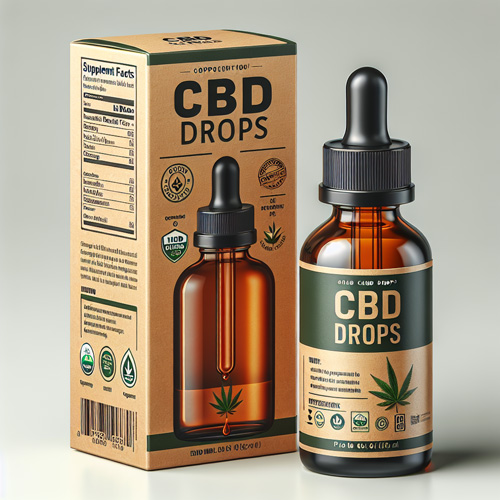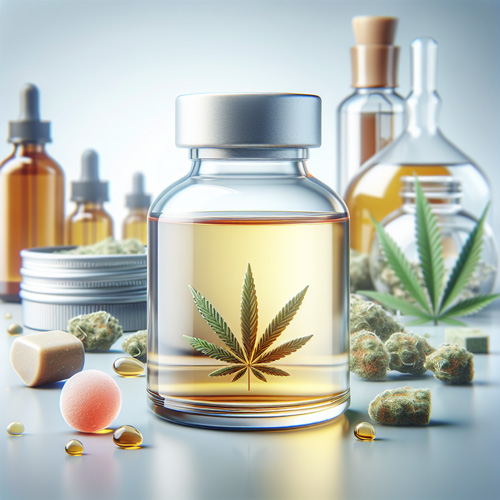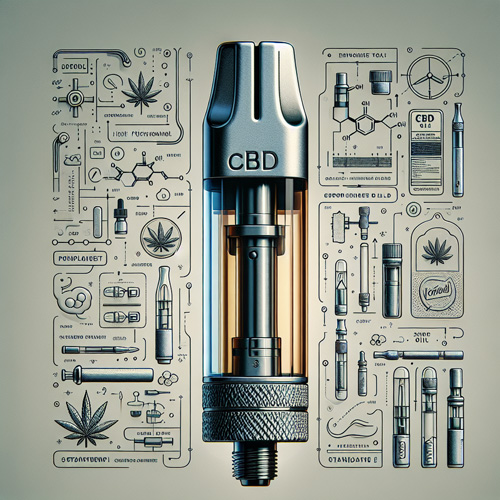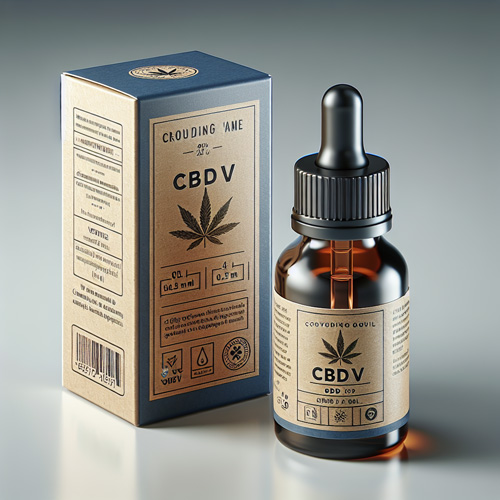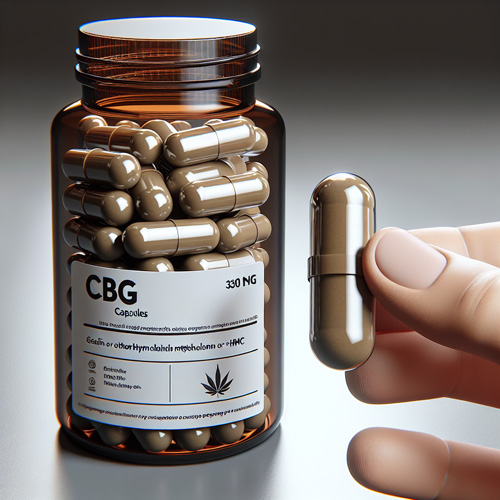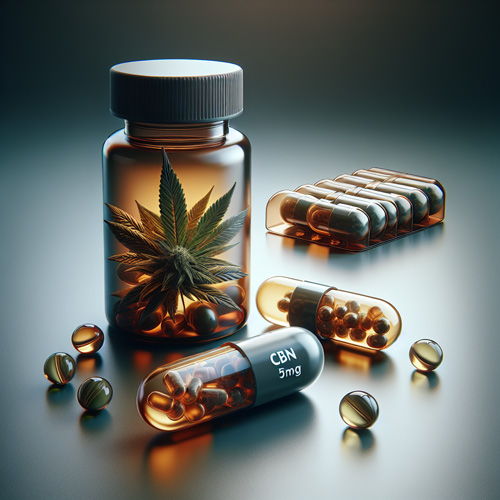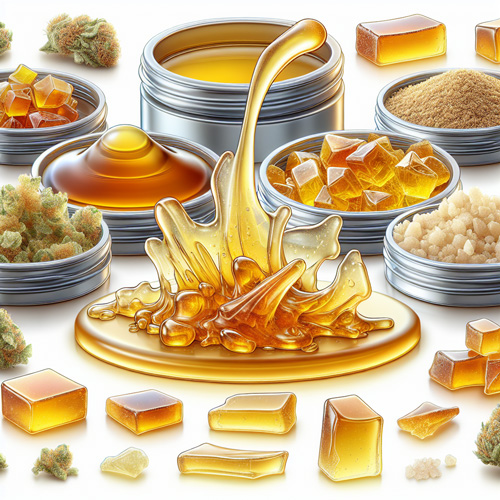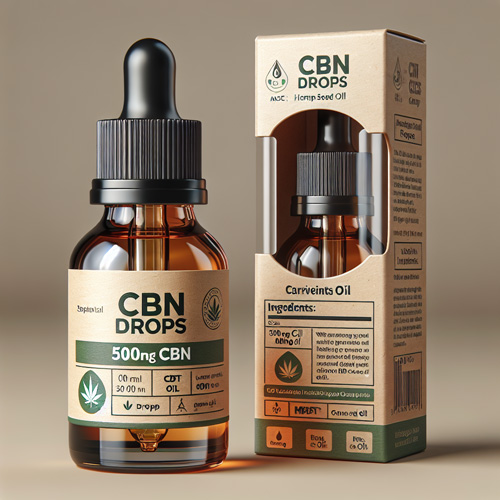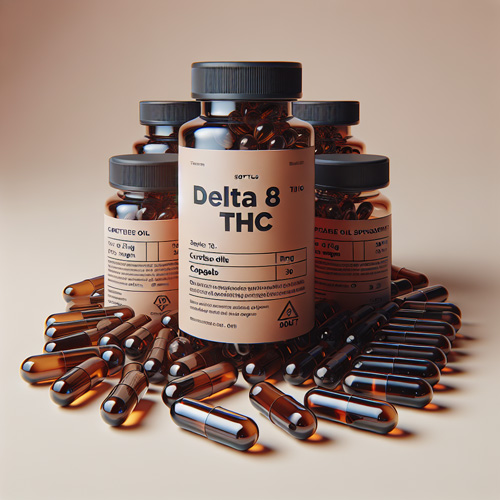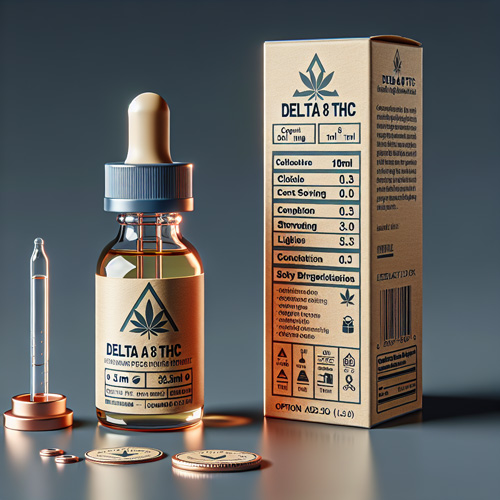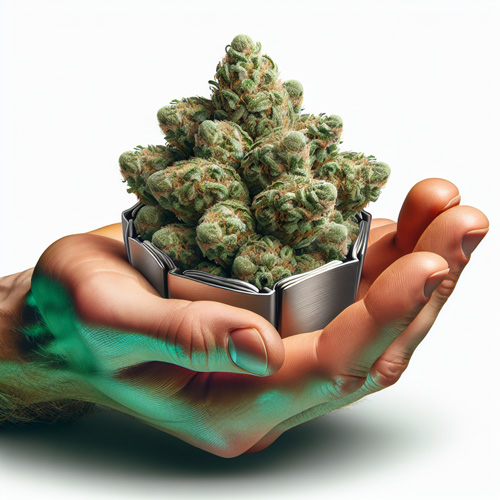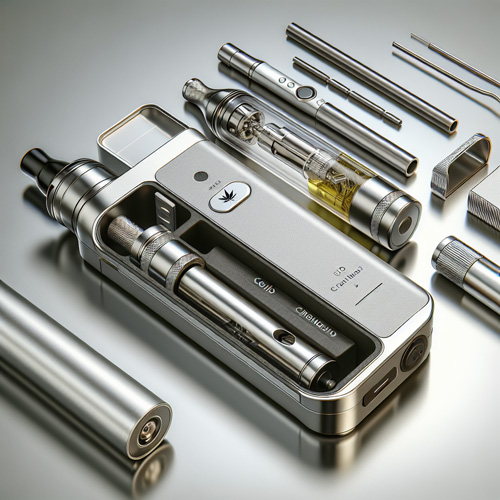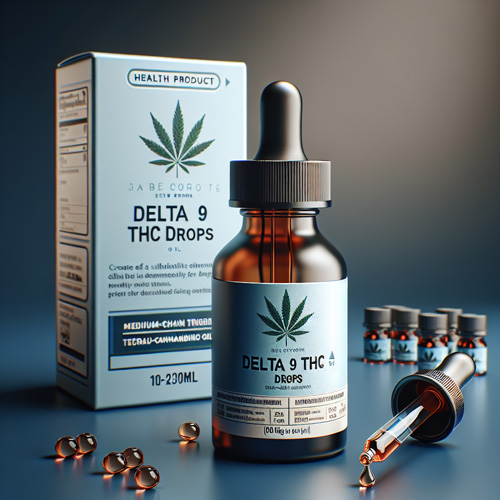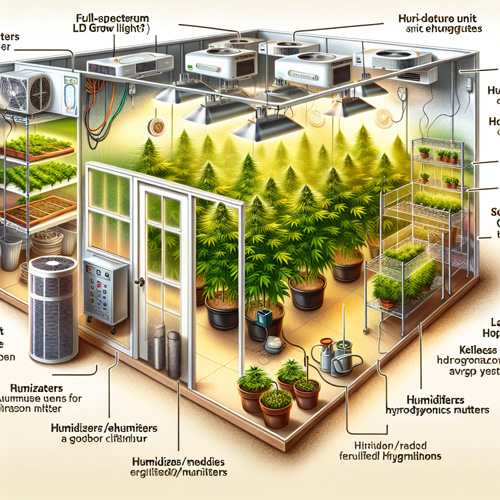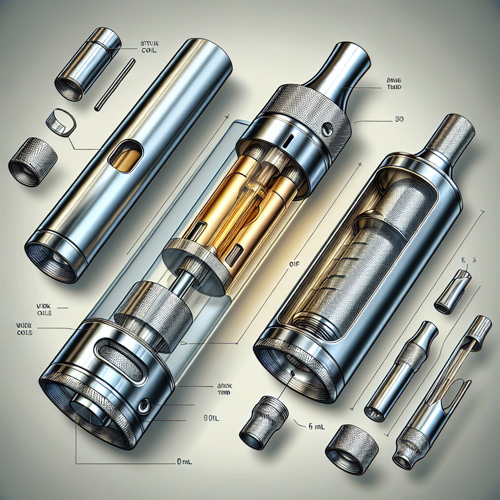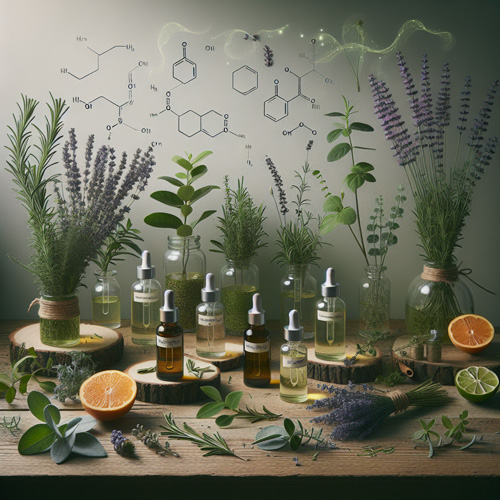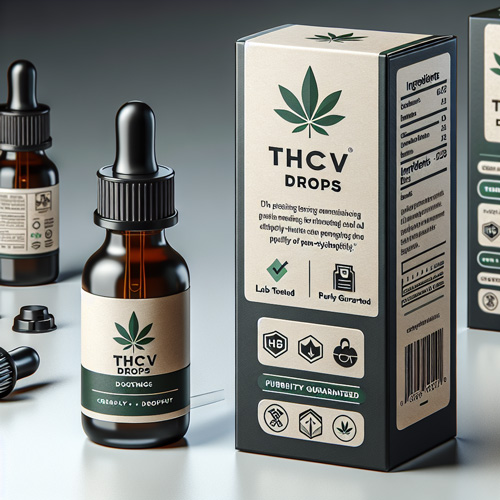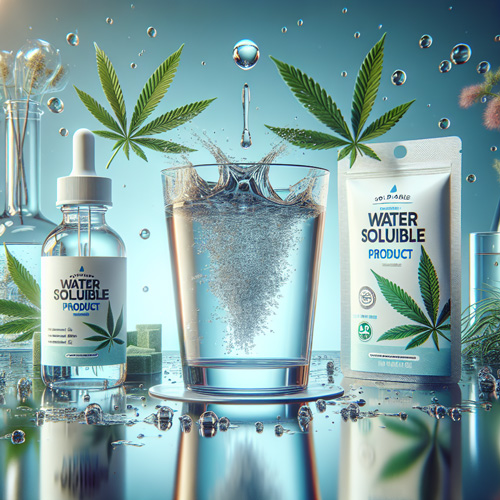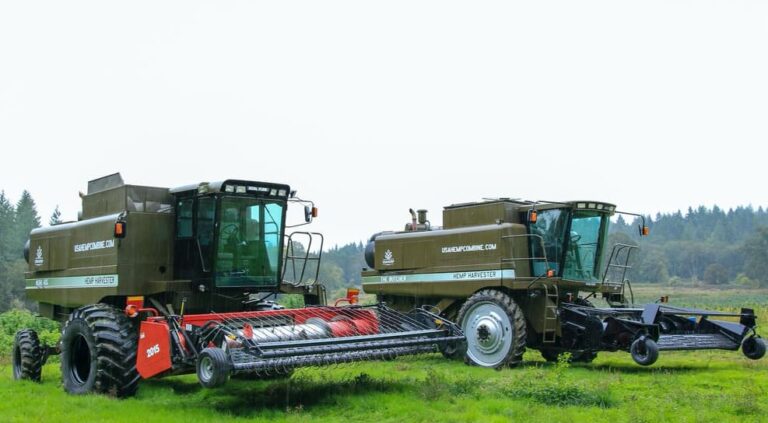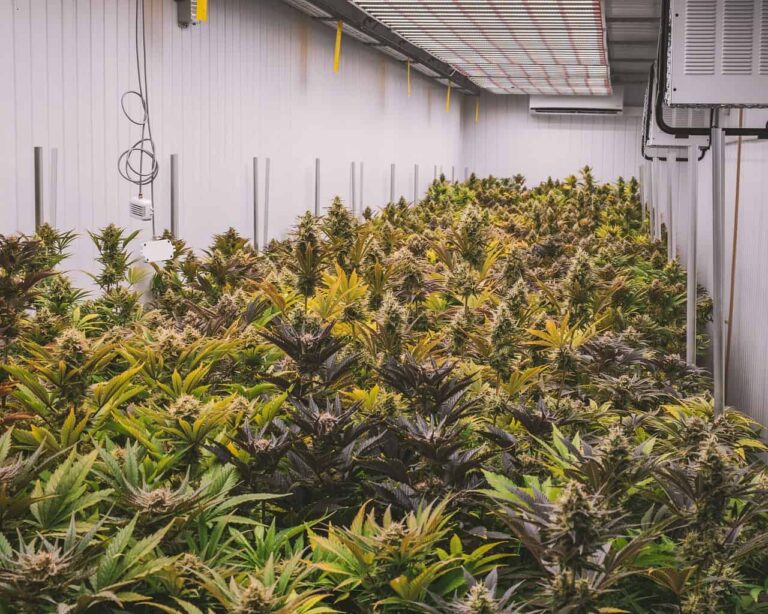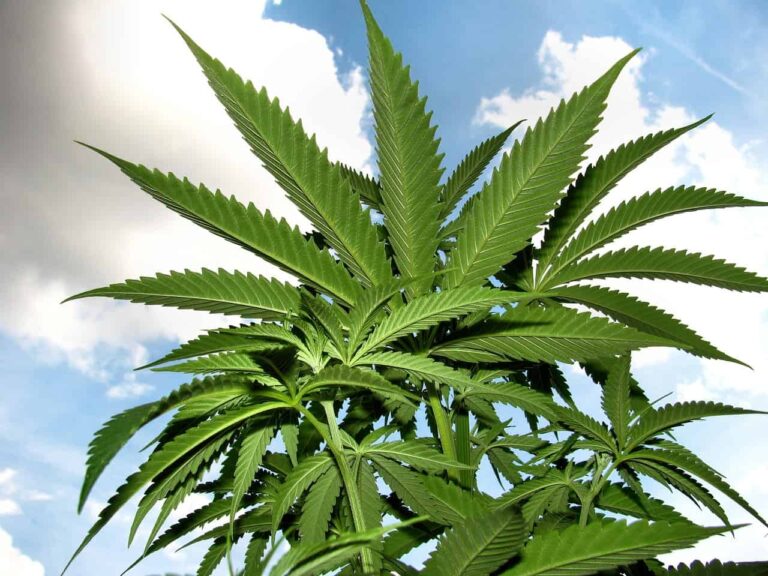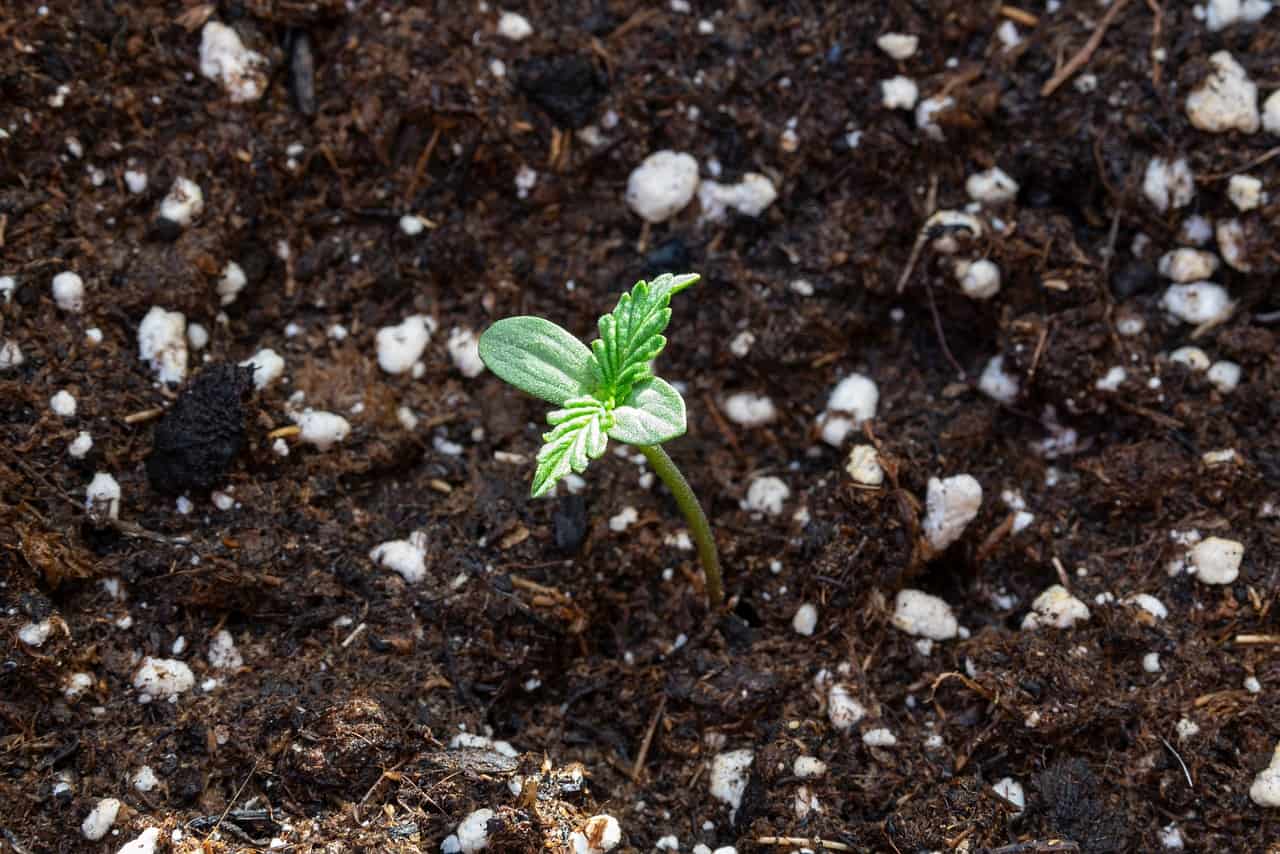
Understanding Hemp Cultivation Laws
Understanding the cultivation laws surrounding hemp is essential for those interested in entering the industrial hemp industry.
Hemp, a variety of the cannabis plant species Cannabis sativa, has gained significant attention in recent years due to its diverse uses and potential economic benefits. However, to ensure compliance with regulatory authorities and obtain necessary licenses, it is crucial to have a comprehensive understanding of the legal definition of hemp.
This article will explore the definition of hemp, the acceptable THC (tetrahydrocannabinol) levels, and the implications for the cultivation of hemp.
Hemp, as defined by most jurisdictions, is a type of cannabis plant with THC levels not exceeding a certain threshold. In the United States, the 2018 Farm Bill provides a federal definition for hemp, stating that it is any part of the cannabis plant containing less than 0.3% THC on a dry weight basis.
This differentiation from marijuana, which is known for its higher THC content, has paved the way for the legal cultivation and production of hemp crops. However, it is important to note that individual states and countries may have their own specific variations of the definition and acceptable THC levels for hemp.
By understanding and adhering to these definitions, hemp farmers and producers can ensure compliance with the regulations and avoid the legal implications associated with cultivating marijuana plants instead of industrial hemp.
Understanding Hemp Cultivation Laws
Understanding hemp cultivation laws is crucial for individuals and businesses interested in entering the hemp industry in the United States. The cultivation of hemp is regulated by both federal and state laws, and it is essential to navigate these regulations to ensure compliance and obtain the necessary licenses.
At the federal level, hemp cultivation is governed by the Agriculture Improvement Act of 2018, also known as the Farm Bill. This legislation legalized the industrial production of hemp and defined it as cannabis plants with a THC content of 0.3% or less. Hemp producers must adhere to this THC limit to differentiate their crops from marijuana plants.
While federal regulations set the overarching framework for hemp cultivation, individual states have the authority to impose additional requirements. These state regulations may include licensing requirements, testing standards, and restrictions on the processing and sale of hemp products. Individuals or businesses looking to grow hemp must familiarize themselves with the specific regulations in their state.
The key participants involved in overseeing hemp production include regulatory authorities at both the federal and state levels. These authorities enforce compliance with cultivation laws and issue licenses to eligible growers. Additionally, tribal hemp programs have their own regulations, as recognized Native American tribes have the right to establish their own regulatory frameworks for hemp cultivation.
To pursue hemp cultivation, individuals and businesses must apply for a license from the appropriate regulatory authority. Licensing requirements vary by state, but typically involve completing an application, submitting a cultivation plan, and paying a fee. It is essential to stay informed about any changes or updates to the regulations to ensure compliance with the law and to mitigate potential risks.
The Cannabis Plant Family
The cannabis plant family, also known as Cannabaceae, is a diverse group of plants that includes both marijuana and hemp. Cannabis plants are known for their psychoactive properties, primarily due to the presence of tetrahydrocannabinol (THC).
However, hemp, a variety of cannabis sativa, is cultivated specifically for its low THC content and high cannabidiol (CBD) levels. The Farm Bill of 2018 legalized the industrial cultivation of hemp with a THC limit of 0.3% or less, distinguishing it from marijuana plants. This distinction is crucial in understanding the legal framework surrounding hemp cultivation.
With the cannabis plant family being the foundation, laws and regulations are in place to regulate and differentiate plants that can be used for various purposes, including medical, recreational, and industrial applications.
Cannabis Sativa
Cannabis Sativa is a species of plant that encompasses both hemp and marijuana varieties. These plants share many characteristics and properties, but differ significantly in their THC levels and legal status.
Hemp is a non-intoxicating variety of Cannabis Sativa, commonly cultivated for industrial purposes. It contains less than 0.3% THC, the psychoactive compound responsible for the “high” associated with marijuana. This low THC level means that hemp is not considered a controlled substance and is legal to cultivate and distribute in many countries.
On the other hand, marijuana is a high-THC variety of Cannabis Sativa primarily bred for its psychoactive effects. It typically contains higher levels of THC, which can range from 5% to 30% or more. Due to its psychoactive properties, marijuana is classified as a controlled substance in many jurisdictions and is subject to legal restrictions.
Cannabis Sativa plants reproduce sexually, meaning they have separate male and female plants. This has significance for hemp growers, as the presence of male plants can affect the quality and potency of the crop. When male plants pollinate female plants, it can reduce the production of cannabinoids, including CBD, in the plant. To maximize CBD production, hemp growers often separate male and female plants to prevent cross-pollination.
Cannabis Sativa includes both hemp and marijuana varieties, which differ in their THC levels and legal status. Understanding these distinctions is essential for farmers and individuals interested in cultivating hemp or marijuana.
Hemp vs. Marijuana
Hemp and marijuana are both derived from the same plant species, Cannabis Sativa, but they differ in their THC concentrations. THC is the psychoactive compound responsible for the “high” associated with marijuana. Hemp contains less than 0.3% THC, while marijuana typically contains higher levels of THC, ranging from 5% to 30% or more. This significant difference in THC levels is what legally distinguishes hemp from marijuana.
According to the legal definition, hemp is classified as cannabis sativa plants with less than 0.3% THC on a dry weight basis. This low THC level means that hemp is not considered a controlled substance and is legal to cultivate and distribute in many countries. On the other hand, marijuana, with its higher THC concentrations, is classified as a controlled substance and is subject to legal restrictions.
Visually, hemp and marijuana plants can be quite similar, making it challenging to differentiate between them without proper testing. This is why THC testing is crucial in distinguishing between the two. Farmers and regulatory authorities often conduct THC testing to ensure that hemp crops meet the legal definition of hemp and do not exceed the acceptable THC level.
Hemp and marijuana may come from the same plant species, but they are legally defined by their THC concentrations. Hemp contains less than 0.3% THC and is non-intoxicating, making it legal to cultivate and distribute. Marijuana, with its higher THC levels, is classified as a controlled substance. THC testing is necessary to visually differentiate between hemp and marijuana.
THC Levels in Hemp and Marijuana
THC levels play a critical role in determining the legal classification of hemp and marijuana. Hemp varieties must contain no more than 0.3% THC on a dry-weight basis to be considered legal. In contrast, marijuana plants have much higher THC levels, typically ranging between 5-25%.
This distinction is crucial because it determines how these plants are treated under the law. Hemp, with its low THC content, is not considered a controlled substance and is legal to cultivate, distribute, and use in many countries. On the other hand, marijuana, with its higher THC concentrations, is classified as a controlled substance and is subject to legal restrictions.
Differentiating between hemp and marijuana visually can be challenging since the plants can appear very similar. Therefore, THC testing is essential in accurately determining the plant’s legal classification. Farmers and regulatory authorities often conduct THC testing to ensure that hemp crops maintain THC levels below the legal limit and do not exceed 0.3%.
Overall, THC levels are a key factor in distinguishing between hemp and marijuana. By ensuring that hemp varieties contain minimal THC, regulatory authorities can promote the legal cultivation, production, and distribution of hemp while maintaining control over the marijuana industry’s legality.
Growing Hemp in the U.S.
With the legalization of hemp cultivation in the United States, many farmers and entrepreneurs are taking advantage of the opportunities presented by the booming hemp industry. Understanding the laws and regulations surrounding hemp cultivation is crucial for those interested in entering this market.
From obtaining hemp licenses to complying with THC testing requirements, there are several key considerations to keep in mind. In this article, we will explore the cultivation laws and regulations for hemp in the U.S., providing a comprehensive overview for farmers, entrepreneurs, and anyone interested in the world of hemp production.
Federal Regulations of Hemp Production in the United States
The cultivation of industrial hemp in the United States is regulated by federal laws and regulations. In 2018, the Agricultural Improvement Act, also known as the Farm Bill, made significant changes to these regulations, distinguishing hemp from marijuana and authorizing the United States Department of Agriculture (USDA) to develop regulations for hemp cultivation.
Under the Agricultural Improvement Act of 2018, hemp is defined as cannabis plants with a THC (tetrahydrocannabinol) level of 0.3% or less. Any cannabis plants with a THC level exceeding this limit are considered marijuana, which remains a controlled substance under federal law.
To grow hemp legally, individuals or entities must obtain a federal license. This requires compliance with the USDA Domestic Hemp Production Rule, which sets forth the requirements and procedures for hemp cultivation. The rules cover various aspects such as licensing requirements, recordkeeping, sampling and testing procedures, disposal of non-compliant plants, and compliance with applicable state and tribal plans.
The USDA’s regulations aim to ensure consistency and compliance across the industry and provide a framework for the commercial production of hemp. By implementing these regulations, the federal government seeks to support the growth of the hemp industry while ensuring the safety and quality of hemp products.
Federal regulations, including the Agricultural Improvement Act of 2018 and the USDA Domestic Hemp Production Rule, govern the cultivation of hemp in the United States. These regulations distinguish hemp from marijuana, establish licensing requirements, and set standards for hemp production, contributing to the development of a thriving hemp industry.
State Regulations of Hemp Production
While federal regulations provide a framework for hemp cultivation in the United States, it’s important to note that each state has the authority to establish its own regulations for hemp production. These state regulations often complement the federal rules and help ensure that hemp cultivation is carried out in a manner that aligns with specific local needs and priorities.
One key aspect of state regulations is the licensing requirements for hemp growers. In order to legally cultivate hemp, individuals and businesses must typically obtain a state-issued license. These licenses may have different categories depending on the intended use of the hemp plants, such as fiber production, grain production, or the extraction of cannabinoids like CBD.
In addition to licensing requirements, states also set forth rules regarding the cultivation process itself. This includes guidelines for planting, harvesting, and storing hemp crops. Farmers may be required to follow specific protocols to minimize cross-pollination with nearby cannabis crops, which can affect the potency of the plants and potentially cause legal issues.
State regulations also cover issues such as testing and compliance with THC limits. Hemp plants must be regularly tested to ensure that the THC levels remain below the maximum allowable limit of 0.3%. Farmers may be required to submit samples of their crops to authorized laboratories for testing, and failure to meet the THC limit may result in the disposal of non-compliant plants.
Another important aspect of state regulations is the enforcement of standards for processing and selling hemp-derived products. States may require additional permits or licenses for entities involved in processing hemp or manufacturing hemp-derived products, such as oils, tinctures, or textiles. These regulations aim to uphold quality control standards and consumer safety.
Moreover, states may impose restrictions on the sale and distribution of hemp-derived products, particularly if they are intended for human consumption. Additional requirements, such as product labeling and testing for contaminants, may be enforced to safeguard public health and ensure that consumers have access to safe and reliable hemp products.
It’s also worth noting that some states have established pilot programs or research initiatives to explore the potential of hemp cultivation within their local agricultural sectors. These programs may provide opportunities for farmers, researchers, and entrepreneurs to study different hemp varieties, cultivation techniques, and market potential.
While federal regulations lay the foundation for hemp cultivation in the United States, state regulations play a crucial role in further defining the specifics of hemp production. Licensing requirements, cultivation protocols, THC testing, processing standards, and product regulations are among the areas covered by state regulations.
By tailoring their regulations to local needs and priorities, states play a vital role in overseeing and supporting the growth of the hemp industry within their jurisdiction.
Tribal Hemp Programs
In Kansas, individuals who wish to cultivate or produce hemp on tribal land must adhere to specific licensing requirements as part of the Tribal Hemp Programs. These programs are designed to regulate and oversee hemp cultivation within the jurisdiction of the respective tribal nation.
To legally engage in hemp cultivation on tribal land in Kansas, individuals must obtain a license through the tribal nation’s regulatory authority. This licensing process ensures that hemp cultivation is carried out in accordance with the tribal regulations and guidelines, providing a framework for responsible and compliant operations.
It is important to note that tribal hemp programs distinguish between hemp and cannabis. While both hemp and cannabis come from the same plant species, Cannabis sativa, they have distinct characteristics and purposes. Hemp is cultivated for its fiber, grain, or the extraction of cannabinoids like CBD, and contains low levels of THC (tetrahydrocannabinol), the psychoactive compound found in cannabis.
By implementing licensing requirements through the tribal nation’s regulatory authority, the Tribal Hemp Programs in Kansas seek to foster a thriving hemp industry while maintaining compliance with applicable laws and regulations. This licensing process ensures that tribal members and other individuals involved in hemp cultivation on tribal land are operating within the bounds of legal and regulatory frameworks, contributing to the responsible and sustainable development of the hemp industry.
Industrial Uses for Hemp Products
Hemp is an incredibly versatile plant with a long history of industrial use. From textiles and construction materials to biofuels and bioplastics, hemp has the potential to revolutionize numerous sectors. Hemp fibers are known for their strength and durability, making them suitable for the production of ropes, fabrics, and paper.
The woody core of the hemp plant, known as the hurd, can be used to create building materials such as hempcrete, a sustainable alternative to traditional concrete. Hemp seeds are rich in protein and healthy fats, making them a valuable ingredient in food and beverages.
Additionally, hemp oil extracted from the seeds can be used for cooking, skincare products, and even as a biofuel. As more research is conducted and new technologies are developed, the industrial uses for hemp products continue to expand, presenting exciting opportunities for sustainable innovation across various industries.
History of Industrial Uses for Hemp
Hemp, a versatile plant with a rich history, has been cultivated and used for various industrial purposes for centuries. Its strong fibers were traditionally used to create ropes, textiles, and paper. Hemp was a vital crop during the age of sail, as it provided the materials needed to create strong ropes and sails for ships.
In addition to being a valuable fiber crop, hemp is also recognized as a seed crop. Hemp seeds are rich in protein, healthy fats, and various vitamins and minerals. These nutrient-dense seeds can be consumed directly or used to produce hemp oil, which has gained popularity in recent years due to its potential health benefits.
More recently, the production of cannabinoids, such as CBD, has become a significant use of hemp plants. Cannabinoids are naturally occurring compounds found in cannabis plants, including hemp. These compounds have gained recognition for their potential therapeutic effects.
Beyond ropes, textiles, and cannabinoids, hemp has proven its versatility in the production of a wide range of products. Hemp fibers can be used to create durable clothes, while hemp pulp can be used to produce paper that is both sustainable and environmentally friendly. Hemp can even be utilized in the production of bioplastics and biofuels, offering greener alternatives to traditional petroleum-based products.
With its long history as a fiber crop, seed crop, and a source of valuable cannabinoids, hemp has established itself as an important industrial plant with a multitude of applications. As the regulatory landscape surrounding hemp continues to evolve, the potential for further innovation and product development within the hemp industry is vast.
Common Industrial Products Made with Hemp
Hemp is an incredibly versatile crop that can be used to produce a wide range of industrial products. From rope to clothes, food to paper, hemp has numerous applications that make it a valuable resource.
One of the oldest and most well-known uses of hemp is in the production of rope. Hemp fibers are incredibly strong and durable, making them ideal for use in rope and other cordage products. In fact, hemp rope is considered to be stronger than steel on a pound-for-pound basis.
Hemp fibers are also used to create textiles and clothing. The fibers are spun into yarn and then woven into fabrics that are lightweight, breathable, and comfortable to wear. Hemp clothing is known for its durability and ability to withstand repeated wear and washing.
Hemp seeds are a source of nutritious food. They are rich in protein, healthy fats, and various vitamins and minerals. Hemp seeds can be consumed directly or used to produce hemp oil, which has gained popularity for its potential health benefits.
Another common industrial product made with hemp is paper. Hemp pulp can be processed to create paper that is both sustainable and environmentally friendly. Hemp paper is durable, has a high durability, and is an excellent alternative to traditional wood-based papers.
In addition to these common products, hemp can also be used in the production of textiles, plastics, insulation, oil, and biofuel. These applications demonstrate the versatility and potential of hemp as a sustainable and renewable resource.
Overall, hemp’s ability to produce a wide range of industrial products makes it a promising crop with significant economic and environmental potential.
Licensing Requirements for Growing Hemp in the U.S.
In recent years, the cultivation of industrial hemp has gained significant interest and momentum in the United States. However, to legally grow and produce this versatile crop, individuals and businesses must adhere to specific licensing requirements.
The regulatory authority overseeing the hemp industry varies from state to state, with some states following federal guidelines established by the U.S. Department of Agriculture (USDA). To obtain a hemp production license, prospective farmers must apply through their respective state or tribal hemp program, providing details such as the intended use of hemp, proposed acreage, and specific hemp varieties to be cultivated.
Additionally, applicants may need to provide documentation, such as proof of land ownership or lease agreement, to demonstrate their eligibility. Alongside these requirements, farmers must also ensure compliance with regulations related to plant species, THC levels, and crop permits.
While navigating the licensing process can be complex, understanding and adhering to these requirements is essential for individuals or businesses looking to engage in the cultivation of hemp in the U.S.
Federal License Requirements for Growers
In order to cultivate hemp in the United States, individuals must meet certain federal license requirements. The cultivation of hemp, classified as an agricultural commodity, is regulated by various federal programs.
To grow hemp, individuals must be licensed under a state hemp program, a tribal hemp program, or the United States Department of Agriculture (USDA) hemp program. State and tribal hemp programs often require growers to apply for a license through the local department of agriculture or tribal government.
For those who do not have access to a state or tribal program, they can apply for a USDA hemp production license. The USDA provides a platform called the Hemp eManagement Platform (HeMP) where growers can apply for a USDA hemp production license.
By obtaining the necessary licenses through state, tribal, or USDA programs, growers can legally engage in the cultivation of hemp. Adhering to these federal regulations ensures compliance with all applicable guidelines and standards.
Individuals interested in growing hemp must acquire the appropriate licenses under state, tribal, or federal programs. These programs are designed to regulate the cultivation of hemp and provide oversight to ensure compliance with federal regulations. The licensing process ensures that hemp growers are operating within the guidelines set forth by the regulatory authorities.
